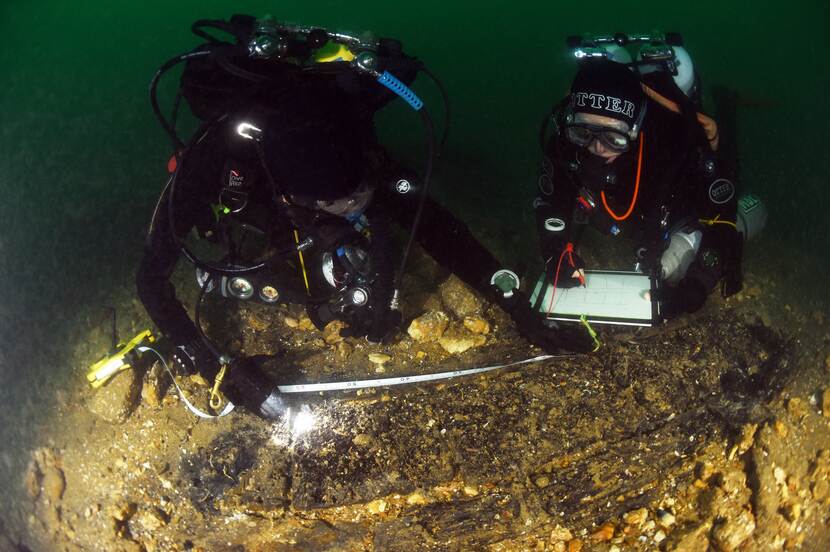An extremely well-preserved shipwreck previously known as the "unknown wreck off Eastbourne" has been identified as a 17th-century Dutch warship named Klein Hollandia which, after painstaking research, was discovered to have been involved in the second Anglo-Dutch war.
The discovery will open a "fascinating chapter in rich, shared maritime history between UK and Netherlands." The wreck was initially discovered in 2019, after which archaeologists and scientists jumped into action to research the ship which had lain on the seabed, 32 metres below the surface, after being sunk by English forces in 1672.
The evidence was gathered by a team of professional and volunteer divers, as well as archival research and dendrochronological (that is, tree ring) analysis of the wood samples. It all pointed to the ship being the Klein Hollandia warship which was built in 1656 and was owned by the Admiralty of Rotterdam.
The Guardian reports that the Netherlands Cultural Heritage Agency and the Nautical Archaeology Society worked in partnership with Historic England to confirm the identity of the wreck. It carries the highest level of protected status.
According to the researchers, the condition of the wreck is “remarkable” and Historic England stated its hope that it can offer a treasury of information about how 17th-century Dutch ships were built, as well as the activities of the warship during its final voyage.

A Bellarmine Jug found at the wreck site of the Klein Hollandia. Credit: Nautical Archaeology Society / James Clark
Much of the wooden hull, a cannon, Italian marble tiles and pieces of Italian pottery were found. Studies of the stone on the sunken vessel identified it as being marble from the quarries of the Apuan Alps, where some of the finest marble in Italy originates from.
In 2015, the wreck was first spotted but only as an abnormality on the seabed during a hydrographic survey in 2015. However, in 2019, a local dive operator named David Ronnan discovered the shipwreck.
"From our very first dive on the wreck, back in April 2019, we have been fascinated by the range of material on the seabed," said Mark Beattie-Edwards, CEO of the Nautical Archaeology Society. "The impressive amount of wooden hull structure, the ships’ cannon, the beautifully cut marble tiles, as well as the pottery finds, all point towards this being a Dutch ship from the late 17th century coming back from Italy. Now, after four years of investigation and research, we can confidently identify the vessel."
The research revealed that the ship was part of a squadron escorting the Smyrna fleet as it sailed from the Mediterranean to the Channel as it made its way to the Netherlands in 1672. The squadron was attacked at the Isle of Wight by an English squadron under Sir Robert Holmes. The vessel was severely damaged and its commander, Jan van Nes, was killed in the action.
The ship was then boarded and conquered by the English, only to sink shortly afterwards, taking English and Dutch sailors with it. It was this surprise action by the small English squadron that contributed to the start of the third Anglo-Dutch war.
"This provides valuable knowledge and important insights into the shared history of our seafaring nations," said Gunay Uslu, the Dutch state secretary for culture and media.

